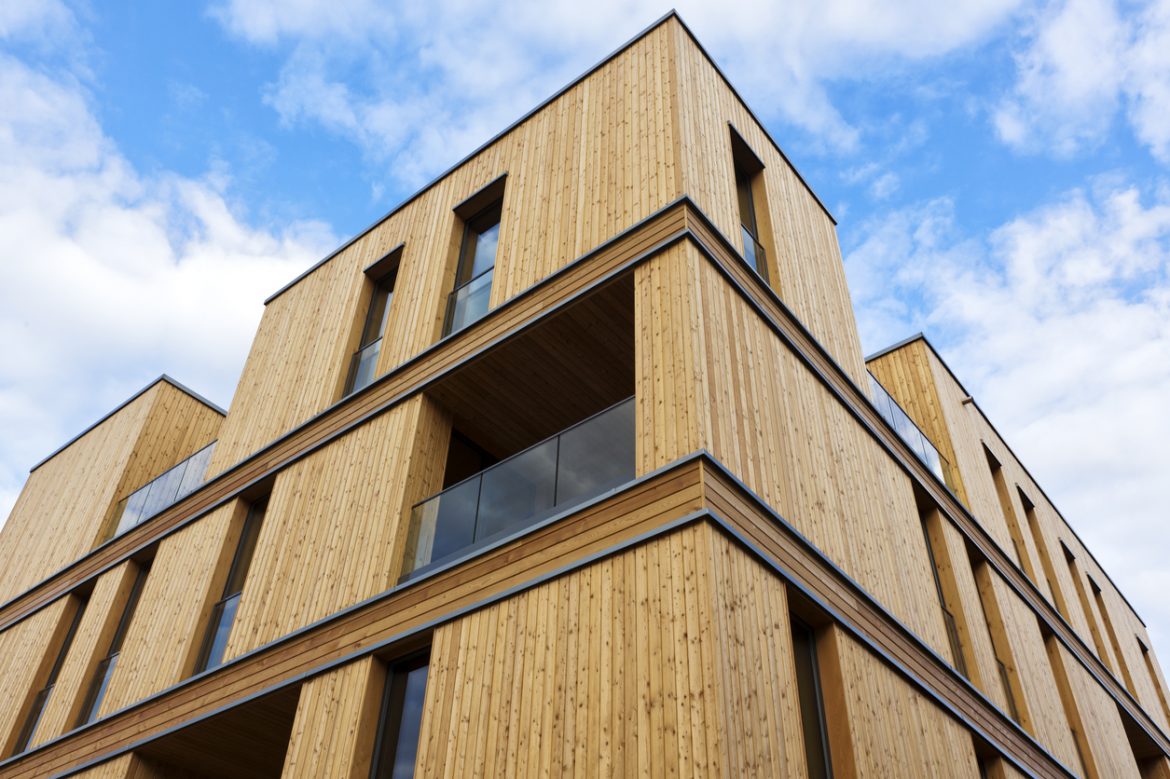
- IBC 2021 provisions introduce Tall Wood Structures
- New provisions included in IBC 2021 will include (3) new construction types – Type IV-A, IV-B, and IV-C. The current Type IV will be re-classified as IV-HT (Heavy Timber). The A, B, C classifications will allow structures of 18-, 12-, and 9-stories, respectively, to be constructed of mass timber. Each sub-category will have fire-rating requirements that become more restrictive the taller the building. Some states and jurisdictions have already adopted or plan to adopt these provisions soon, including Washington, Oregon, and California. Woodworks has published an article summarizing these code changes coming in 2021: http://www.woodworks.org/wp-content/uploads/wood_solution_paper-TALL-WOOD.pdf
- Designing Mass Timber for Office
- One of the earliest adopters of mass timber has been the Office sector. At multiple sessions we learned of the benefits the system can bring to these structures, including:
-
-
- Exposed cross-laminated (CLT) timber floors/walls and glu-lam beams save on finishes while “bringing the outdoors inside”. Contact with wood has been shown as a calming factor, too, leading to happier tenants.
- Construction of mass timber is faster and requires less labor than steel/concrete. Can reduce schedule by up to 5 months, which reduces general conditions and interest on construction loan. All this leads to leasing the building sooner and making money for the developer/owner.
- While the grid, ranging from 10’-20’ wide, may be somewhat tighter than typical 30’ bays in Class A Office, developers have had no trouble leasing their spaces – tenants want to be in these buildings.
- This article, published by DLR Group, highlights many of the key points to working in mass timber for office: http://www.dlrgroup.com/media/articles/olt-seattle-timber-study/
- Exposed cross-laminated (CLT) timber floors/walls and glu-lam beams save on finishes while “bringing the outdoors inside”. Contact with wood has been shown as a calming factor, too, leading to happier tenants.
-
- Modularization: The Future of Mass Timber and the Health of the Planet
-
- The construction industry consumes 40% of the Earth’s natural resources while wasting 50% of those resources as trash. Mass timber uses much less waste – one contractor commented they barely need a dumpster on their projects! Furthermore, modular mass timber saves more energy and requires even less labor to produce than conventional construction. Already popular in Europe, modularization of mass timber for multi-family is coming to the US soon.
- Acoustics and Fire Considerations for Mass Timber
-
- There are numerous STC and IIC tests for CLT floors with and without topping slabs and soundmats available. Woodworks has summarized all the results and made the information available on their website (http://www.woodworks.org/wp-content/uploads/Acoustically-Tested-Mass-Timber-Assemblies-WoodWorks.pdf). A minimum of 2” gypcrete topping can be the most effective way of achieving both an STC and IIC of 50.
- While “wet” toppings are great for sound attenuation, there is a strong push for “dry” underlayments to speed up the construction process. Manufacturers and suppliers are working on testing gypsum board and other materials as toppings for CLT panels.
- The IBC 2021 provisions will allow for concealed spaces above the ceiling in Type IV construction by requiring the underside of the CLT panels be covered in gypboard. The provisions allow up to 20% of the ceiling and 40% of the wall to remain exposed, however, for architectural reasons. The intrinsic charring of heavy timber, which protects the wood in a fire, is accounted for in the determination of fire-rating requirements in mass timber construction.



